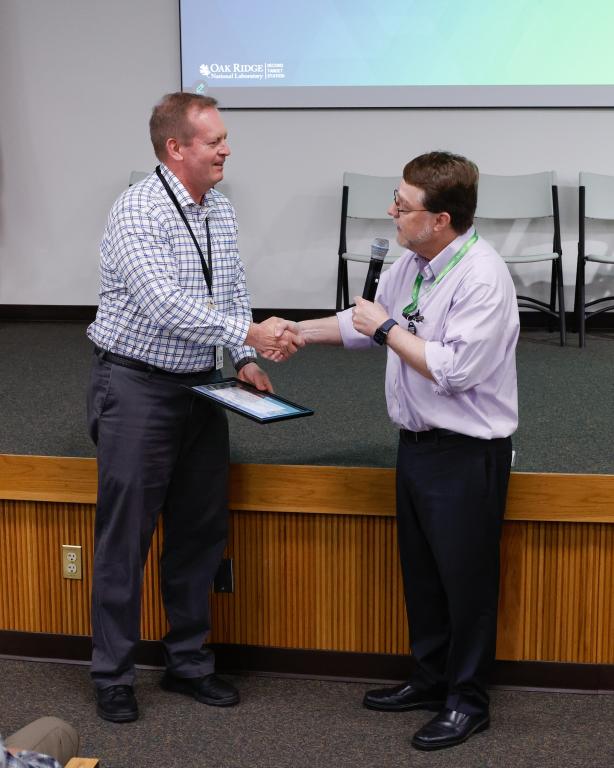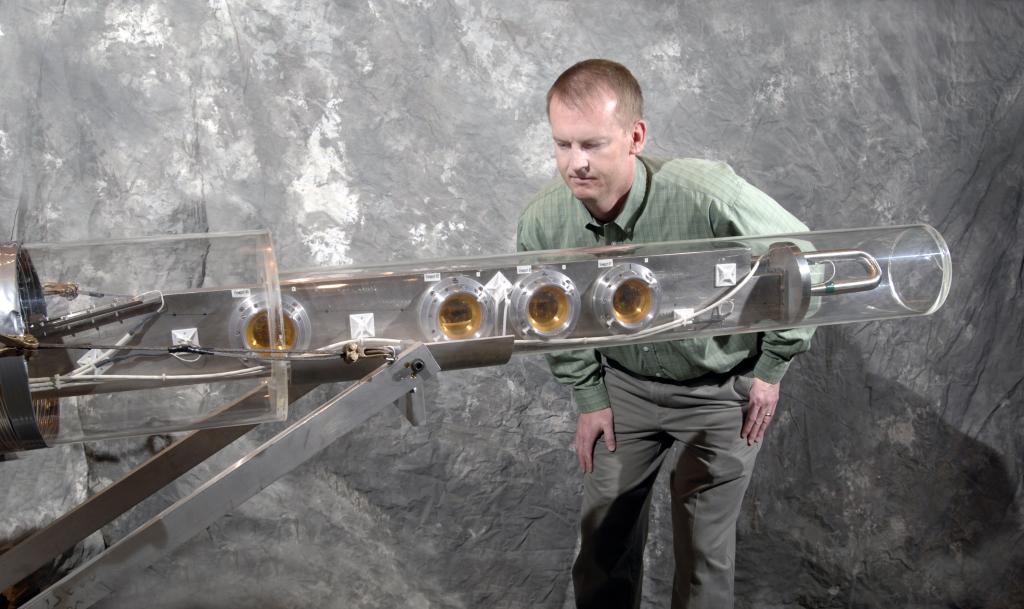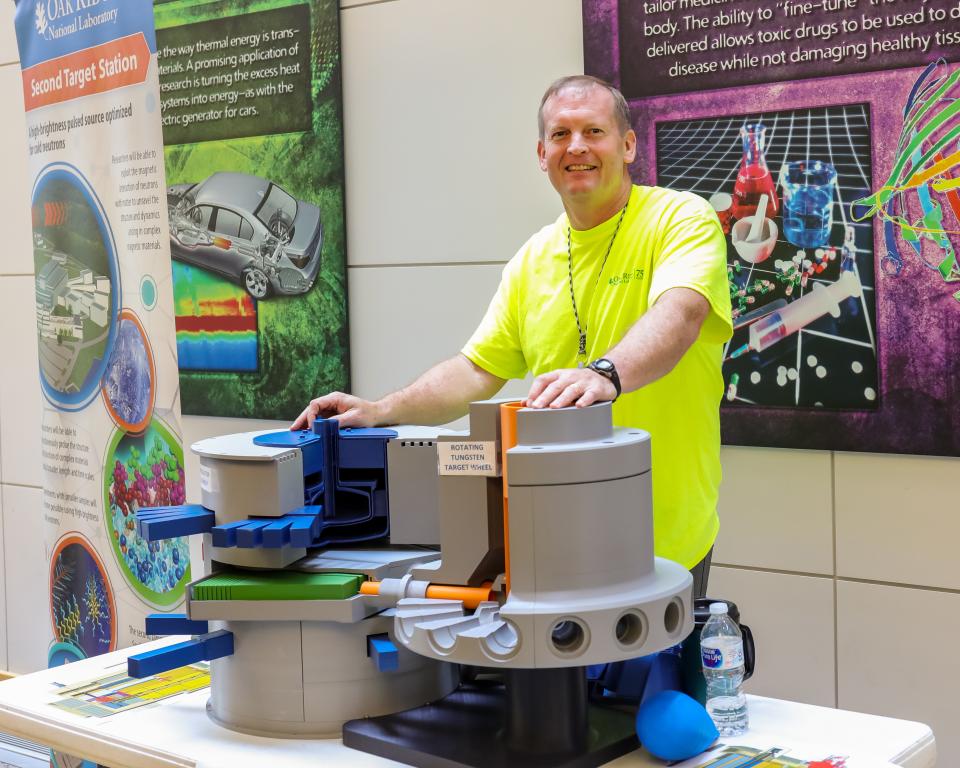
Van Graves, an engineering manager at the Department of Energy’s Oak Ridge National Laboratory, is celebrating 40 years of dedicated service leading a diverse range of prominent engineering projects at ORNL and internationally. Graves is now sharing the experience and knowledge he’s gained with those who are managing similar projects, and he views the success of his team as his ultimate reward and legacy.
ORNL Director Stephen Streiffer presented Graves with a service award in April to recognize his achievements.
“It’s a pleasure to thank Van for all the service,” Streiffer said. “The experience across the complex and breadth of things he’s worked on is just amazing to see.”
Graves' early work on the First Target Station at ORNL’s Spallation Neutron Source (SNS) laid the foundation for his current role. Building on his experience working at SNS, Graves is now the Second Target Station Project’s (STS) instrument systems engineering manager, leading a team of mechanical designers and engineers who are developing a suite of next-generation neutron scattering instruments for STS.
“Working on the design of the SNS and now having the opportunity to do the same for the STS is something I am very proud of,” Graves said. “I feel blessed to have been able to contribute to the design of two facilities of this caliber in my career.”

Before his role with STS, Graves worked within ORNL’s Remote Systems group, which is now part of the Fusion and Fission Energy and Science Directorate. In that group, Graves developed tools and systems for use in hazardous environments, including radiation zones and combat situations. He also designed several remote handling systems for SNS, including a robot that can be used for one of SNS’s most intricate remote tasks: installing complex instrument optics within the core vessel.
His experience also includes developing remote handling concepts and designs for other DOE facilities. Notably, Graves played a key role in a collaboration tasked with designing the hot cell for Michigan State University’s Facility for Rare Isotope Beams, and he led a design study for the Fermi National Accelerator Laboratory’s Long Baseline Neutrino Facility.

Graves also participated in a collaboration within the DOE High-Energy Physics Program, serving as a lead engineer for the MERcury Intense Target, or MERIT, Experiment, for which he developed a unique syringe pump that produced a jet of liquid mercury for a proof-of-principal demonstration, which culminated in an in-beam experiment at the European Organization for Nuclear Research, known as CERN. He also contributed to international (ITER) and domestic (Material Plasma Exposure eXperiment) fusion initiatives.
“We sincerely congratulate Van on 40 years,” said Graeme Murdoch, STS project director. “I don’t know how he’s done it, but well done! Van has had an outstanding career at ORNL and continues to exemplify the traits of an experienced engineering manager who loves his work and is happy to pass this knowledge to his team.”
UT-Battelle manages ORNL for the DOE Office of Science, the single largest supporter of basic research in the physical sciences in the United States. The Office of Science is working to address some of the most pressing challenges of our time. For more information, please visit energy.gov/science. — Sumner Brown Gibbs and Kaeli Dickert


